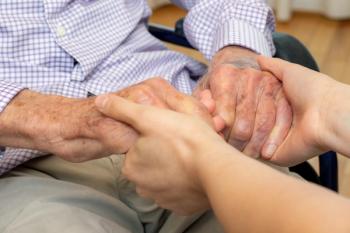
Breast cancer: Rising cases in younger women
Alpa Patel of the American Cancer Society talks about the uptick in cases among younger women, and steps women can take to help protect themselves.
More women have been diagnosed with breast cancer in recent years, and researchers are seeing bigger increases in younger women.
From 2012 to 2021, the incident rate of breast cancer has risen 1% annually, but
“We know that most breast cancers are due to your lifetime exposure to the sex hormone estrogen, and a lot of things can influence that,” she tells Chief Healthcare Executive®. “Some of those things are in our control. Some are not.”
“There's a lot of different factors that play into your total lifetime exposure to estrogen, and we're seeing some changes in younger generations to many of those risk factors,” she says.
In an interview, she talked with Chief Healthcare Executive about what women can do to reduce those risks, and what health systems can do to help more patients.
(See part of our conversation in this video. The story continues below.)
Being active
Starting at the age of 40, women should begin regular screenings for breast cancer, according to
Patel points to a host of possible factors contributing to the growing number of younger women diagnosed with breast cancer.
“Many women are not having children, or not having as many children, and they're having their first child, often times at a later age,” she says. “So all of these things may contribute. Those are some of the things that we're looking at, but there's also environmental factors, along with many other factors that we're also exploring.”
Researchers have seen links between obesity and greater risks of breast cancer, Patel notes.
“People are gaining weight at younger ages and carrying that weight for a longer period of time and throughout their life,” Patel says.
Women who stay physically active can reduce their risks of breast cancer, and she notes that she’s not necessarily talking about being skinny or a certain size.
“You want to be metabolically healthy, and that may look very different for different women,” Patel says. “And so it's important to focus on your health, not just based on your body image, but also your metabolic health overall. So that's something that I always like to remind women of … as it relates to breast cancer and many other types of cancer, for that matter. That's really important. There is more than just your body size.”
Patel points out that some people are naturally thinner, but not necessarily fit due to a lack of exercise. She also says that women of any size who are getting more active are helping themselves and potentially lowering their risk of breast cancer.
“We know that even in the absence of weight maintenance, exercising regularly is tremendously valuable for breast cancer prevention,” she says. “So we see that even in the absence of being at what would be considered an ideal body weight, women who are physically active are at lower risk of developing breast cancer than women who are inactive.”
Recognizing breast density
Women need to recognize risks of breast cancer tied to breast density.
About half of American women have dense breasts, which gives them a greater risk of developing breast cancer. One of the challenges for women with breast cancer is that mammograms have more difficulty detecting cancers in dense breasts.
On the upside, mammograms are now required to include information about the patient’s breast density.
“I've really encouraged women of any age, but especially as you're aging, to understand what your breast density is,” Patel says.Women with higher breast density should talk about it with their physicians, she adds.
They should ask their doctor if they should be screened more frequently. And women with dense breasts should also talk to their physicians if they should be screened with something beyond a typical mammogram that can detect cancer more easily.
“That's something that a lot of women don't know to ask about, that I really would love for more women to know that they should be asking about it,” Patel says.
Trust your body
Women should pay attention to any changes in their breasts, including lumps or other symptoms including pain or changes in the nipple.
Mostly, Patel says women should listen to their instincts and get in touch with a doctor if they notice anything unusual.
“You know your body better than anyone, and you know what normal feels like in your body,” Patel says.
Women shouldn’t be shy about standing up for themselves if they aren’t feeling heard.
She says that’s especially true for younger women, and women of color, who are at higher risk of worse outcomes when it comes to breast cancer.
“If something doesn't feel right and you feel that it's being dismissed by your healthcare professional, seek another opinion,” Patel says. “That is something that I tell anyone that if you are not comfortable with the answer that you're getting, then you need to advocate for yourself, which can be hard to do, but it's really important that we each do that.”
What health systems should do
Health systems should work to offer the best education possible for patients. Patel concedes that can be difficult for some clinicians, who don’t always get as much time to spend with patients as they would like.
“There is the opportunity to help women understand, again, things like their breast density, understanding that so that we can help empower patients with the information that they need to be able to follow the right screening regimen, do the right lifestyle behaviors,” she says.
More patients are looking at test results and electronic health records through patient portals, and Patel says she sees opportunities for health systems to provide more information directly to those patients.
“I would love to see health systems embrace technology to a greater degree to empower patients,” she says.
Providers should also be making reminders to patients if they are due, or overdue, for a screening. Patel says she creates her own prompts to remind herself to get screened.
“How can we also, through health systems, again, help empower our patients to follow those screening guidelines and get screening at those regular intervals,” she says.








































